Nestled on the shores of Lewis and Clark Lake and the Missouri River, Bon Homme Colony is the original Hutterite Colony in North America. Through flooding, war, river damming, trials, and drought, Bon Homme has remained the North American cornerstone of the Hutterite people. Every Colony in North America has connections and ties to Bon Homme Colony.
Tim Kurbis and I had the opportunity to visit and tour Bon Homme mid September of 2022. It has been a rough growing season for south central South Dakota, and is currently in a severe drought. Upon pulling up to the facilities, we were greeted by silage cutters and semis hauling for fermentation and cattle fodder. Our guide for the day was Herman Stahl; Herman welcomed us and proceeded to give a complete tour of the grounds. A few weeks later, we were also able to connect with Alvin Stahl, who is Bon Homme's Minister.
Settling At Bon Homme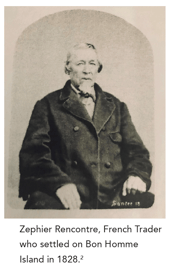
Bon Homme is located a few miles southwest of Highway 50. Twenty miles West of Yankton, the nearest most populated city of about 14,500 people. Bon Homme Colony was established in 1874. As you'll see, the shape and landscape have changed over the last 148 years, but the Hutterite people have persevered and thrived.
The migration of the Hutterite people was prompted in 1871 when the Russian government decreed that Russian be the language of instruction in all schools. The government also revoked the Hutterite and Mennonites' exemption from military service at that time. Over five years, from 1874-1879, the Hutterites left Russia for the United States.1
The Schmiedeleit (Schmiedeleut), or Smith people Hutterites, were the first of three groups of Hutterites that immigrated to the United States. They journeyed from Russia across the Atlantic, docking in New York. Then made their way towards the West via train ending in Lincoln, Nebraska.
They ultimately settled at Bon Homme County, Dakota Territory. As more families moved, more colonies we established, but Bon Homme was the original. Bon Homme means "good-natured man" in French. The story goes that a French trader settled and built a trading post on Bon Homme Island. The name goes back to the late 1700s and the story is very interesting. (Follow the link at the end of the story to read more.)

The land was purchased from a government land agent named Walter Burleigh. Walter was a colorful character from the early days of the Dakota Territory. He worked to help get Lincoln elected as president in 1860, and in return, he was appointed as an Indian Agent in the Dakota Territory3. The 2,500 acres of land was purchased at $10 per acre. Of the $25,000, records show that $17,000 was a cash payment, and the settlers financed the rest. Hindsight shows this was a very sound investment. Surrounding farmland currently goes for up to $8,000 per acre!
The primary use for the land before the Hutterites' purchase was for trading and some farming. An original building used for trading goods with the Native Americans and early settlers still stands and is in use today. (See photo). The history of trading in the Bon Homme area dates back to 1794 when a French trapper came up the Missouri River and set up the for-mentioned trading post on Bon Homme Island.
Bon Homme Tour
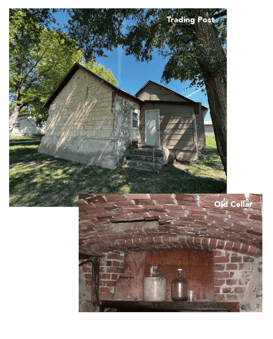
The trading post and the few remaining original buildings on the property are constructed with 12" thick "chalk rock or chalkstone." Chalk rock is a form of limestone and is found on the bluffs surrounding the Missouri River. The sand-colored rectangular blocks are stacked and bonded with mortar. Herman pointed out the original roof line, this building was here upon purchase of the land in 1874, so it's hard to say how old it actually is. Today the building is used as housing for families and has had many additions.
Herman also shared photos of the old cellar initially built to store all the various canned goods, dried meats, and more. The cellar was built with bricks, partially under a building, and extended beyond the foundation. When the time came to demolish the cellar, since the surrounding building was also being torn down, they figured a few bumps with the excavator would do the trick to cave in the structure. Instead, the old cellar proved so strong they could drive on top without a hint of failure. Ultimately, equipment needed to be moved into the cellar for a successful demo. Folks knew how to build back in the day.
Next, we toured the kitchens, children's dining room, and the main dining room, where communal meals are served daily. The facilities are spotless and well organized, essential for keeping things running smoothly on a Colony this size.
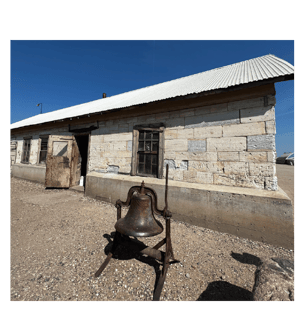 We also toured what is now a carpenter shop and storage building that is also one of the original structures—assembled with the same chalk rock. The interior framing and some original floorboards are most likely cottonwood, which was plentiful along the river. The outside of the building is adorned with old saw blades, including an original stone saw used to shape the chalkstone used for the building. This building, at one time, served as the blacksmith shop, mechanics shop, and more. Outside the shop sits one of the original dinner bells. Like most Colonies, an electronic bell is now used for gathering.
We also toured what is now a carpenter shop and storage building that is also one of the original structures—assembled with the same chalk rock. The interior framing and some original floorboards are most likely cottonwood, which was plentiful along the river. The outside of the building is adorned with old saw blades, including an original stone saw used to shape the chalkstone used for the building. This building, at one time, served as the blacksmith shop, mechanics shop, and more. Outside the shop sits one of the original dinner bells. Like most Colonies, an electronic bell is now used for gathering.
World War 1
The United State's involvement in World War 1 brought some deja vu to the Hutterite people. The United States began conscripting young men for the war effort. The Selective Service Act was signed into law in 1917 and required all men ages 21-30 to register for military service. The Hutterites, who practice pacifism, came to a new fork in the road, all too familiar with the circumstances that led them to leave Russia in the first place.
The leadership decided to put the land and buildings up for sale, and the Colony would migrate north to Canada, which at the time was welcoming settlers and granting clemency from the war efforts. The sales arrangements were made, and a buyer was in place. However, when the day came to complete the sale, the buyer never showed up. The buyer finally turned up a day or two later, and the Bon Homme leadership informed him they were not selling "A different day, a different deal." No one is sure why this decision was made; Alvin speculates leadership had a vision for the future, and selling wasn't part of the deal. Thankfully, Bon Homme was able to weather conscription and avoided having any men drafted for the war effort. Unfortunately, other sister colonies did not have the same luck; Rockport Colony men were arrested for refusing to enlist.
Damming the Missouri River
 The beginning of our tour began along the top of a wooded bluff. 40-50 feet below are the banks of Lewis
The beginning of our tour began along the top of a wooded bluff. 40-50 feet below are the banks of Lewis
and Clark Lake, but this wasn't always the case. The impoundment of Lewis and Clark Lake is a result of the construction of the Gavin's Point Dam located just downstream outside of Yankton, South Dakota.
The original Colony included land and buildings along the banks of the Missouri River below the bluff where the Colony is currently located. An entire island (Bon Homme Island) was situated on the bottom groun

d. Alvin recalled stories from his Mother about working and living on the island. Buildings on Bon Homme Island included hog barns, a flour mill, and homes. The land was also cultivated and used for crop growing. Land near Bon Homme Island was used as docking and
refueling areas for the constant steamboat traffic. The bottomland was lush with trees which were harvested and used for fuel for the steamboats.
The Missouri River had constantly flooded, and the Colony had to deal with the ebbs and flows of spring flooding and the changing channels of the ever-relocating river. In some cases, the river could erode as much as 300 feet of banks, relocate channels over 2000 feet, and deposit vast amounts of silt.
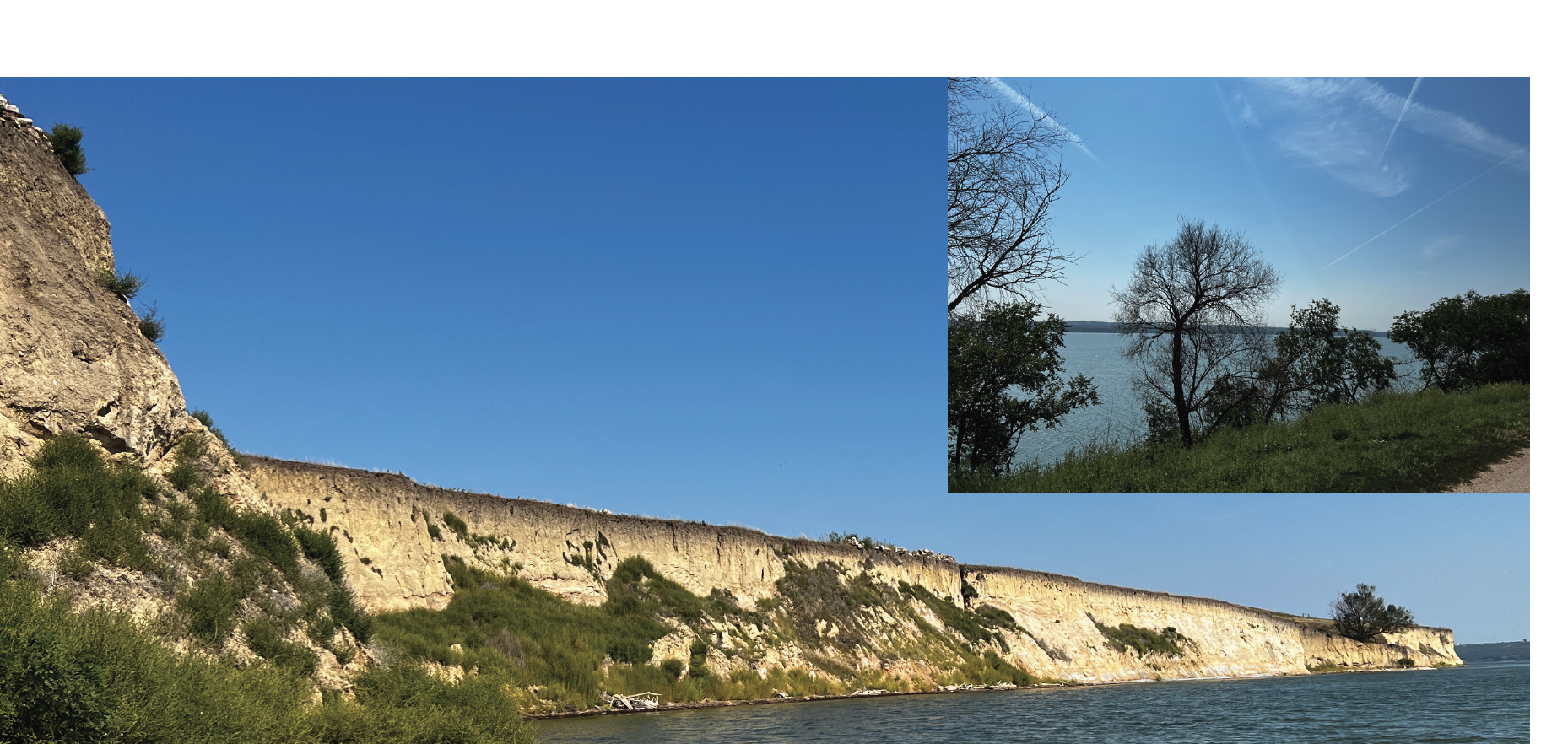 In 1943 a sudden spring thaw released one of the worst floods in the recorded history of the Missouri River. The flooding reached as far as Omaha, leaving the airport under 8 feet of water. The resulting flooding inundated millions of acres of farmland. The flood prompted Congress to pass flood control relief along the river, resulting in the construction of six mainstem dams along the Missouri River.
In 1943 a sudden spring thaw released one of the worst floods in the recorded history of the Missouri River. The flooding reached as far as Omaha, leaving the airport under 8 feet of water. The resulting flooding inundated millions of acres of farmland. The flood prompted Congress to pass flood control relief along the river, resulting in the construction of six mainstem dams along the Missouri River.
Gavins Point Dam was started in 1952 and completed in 1957 at the cost of 51 million dollars. It is the smallest of the Pick-Sloan Plan but arguably the most important. Water released from the upper dams is stored in the Lewis and Clark Lake reservoir for hydroelectric power production. The dam controls the flows, enhancing navigation opportunities and minimizing bank erosion. The government purchased the bottom land owned by the Colony at $70 per acre. At the time, losing the ground was a big deal, but removing the risk of future flooding and devastation was probably worth the loss in the long run.
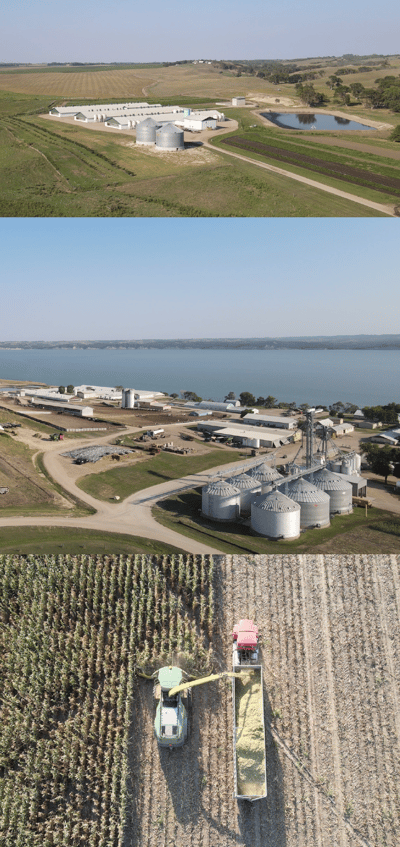
As a result of the dam project, banks along the Colony are now mostly comprised of riprap used to slow and stop erosion from the river. Although the damming of the river and strategic placement of riprap has helped with erosion, it is still an issue; the banks just east of the Colony have significantly receded in the last 50 years.
Life at Bon Homme Today
The people of Bon Homme today are thriving. The current population is 47 families with 195 people; larger than the average Colony. When asked why the numbers were higher, Herman responded with the difficulty of acquiring land, as land prices are at all-time highs. The goal is to build a new sister colony as land becomes available.
A challenge the Colony is faces with its current size is, keeping enough work available for the men. Bon Homme is currently assisting neighboring colonies with everything from fabrication and metal work to construction building projects.
Church has gotten a bit cozy as well; no need for heat in the winter and not enough air conditioning for the summer!
Farming and Agriculture
Farming and agriculture have been at the heart of Bon Homme since its founding in the late 1800s. Today the foundation remains the same but the scale and technology has advanced greatly.
Grain
Bon Homme is farming just over 5,300 acres of land, mainly growing corn and soybeans. The Colony also grows alfalfa and some small areas of other grains, like rye, used for straw. Almost all the grains grown are used to feed and supply the livestock at Bon Homme. During our visit, the signs of a significant drought were pretty clear. As a result, lots of extra corn is being cut and compacted for silage to feed the dairy and beef cows.
Livestock
When it comes to raising animals, Bon Homme just about does it all!
Hogs: Pigs have been part of Bon Homme Colony since the beginning. In 2008 when the pig barns were getting updates, some elders speculated it was the first time Bon Homme was without hogs since the very early days, quite possibly the same lineage of hogs for over 100 years! Currently, it's home to 1,400 hogs farrow to finish.
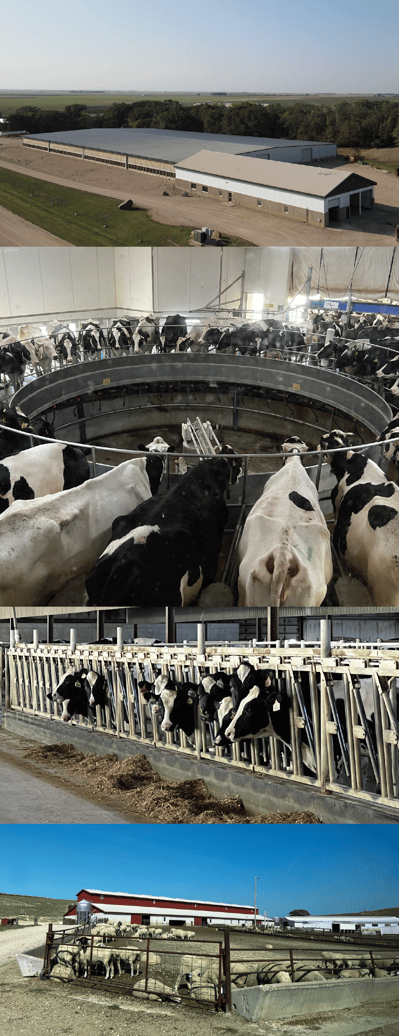
Beef Cattle: Bon Homme currently has 500 head of beef cattle; they are raised to 850-900 pounds and then sold to feedlots.
Milking Cows and Dairy: The Colony is home to an impressive dairy operation. The modern facility is set up for milking 350 cows twice a day. Milking happens on a 32-slot carousel. The process is smooth and enjoyable to observe. So entertaining that when they built the milking facility, they were convinced to add a viewing room and window. The idea was a success; as things got up and running, colony members would flock to the room to watch the rotating cows being milked.
Eggs: 600 Layer chickens are onsite and used mainly within the Colony.
Broiler Chickens: The Colony also raises and slaughters around 18,000 broiler chickens each year.
Sheep: Last but not least is the sheep. Bon Homme is home to 1000 ewes. Each sheep is sheared about every nine months. Lambing happens around three times yearly, in April, August, and December.
The Garden: Like most Colonies, Bon Homme has an impressive garden. Lush and green, even in a severe drought, the plants benefit from irrigation from the river. The garden has everything you expect, apples, a grape vineyard, and produce for canning and use year around.
The Colony also has a farmer's market available to neighbors during the summer. Anyone can come out and buy eggs, produce, honey, and more.
Beyond Agriculture
Bon Homme does more than just farm and raise animals. There is an impressive metal job shop on site. Currently, trailer manufacturing and assembly is the primary source of work.
Bon Homme also has an entire construction and carpentry crew. While this is great for keeping up facility and expanding the Colony, it has also been a tremendous blessing for sister colonies. For example, this spring, a neighboring Colony suffered a lot of storm damage. Bon Homme was able to send their crew to help replace a roof and aid in other recovery efforts.
Activities And Other Facts
It should be apparent the people at Bon Homme are not short on things to do. But it's not all work. Being next to such a significant body of water offers some opportunities for fun and adventure. Hiking is a popular activity, and there is no shortage of river banks and bluffs to explore along the Missouri River. Children in the Colony also enjoy fishing when time allows. A good day of fishing will yield some tasty catfish. In the winter months, the lake will freeze over. Kids enjoy sledding and activities on the ice.
Hutterite History Book
Herman and Alvin also share some images of an incredible book. The book dates back to the 1500s and is full of Hutterite history from the old country: significant events, happenings, moves, persecution accounts, and more. As you browse the book, you can observe the changes in handwriting and styles as the role of the historian passed from person to person. Everything is handwritten and illustrated. This heirloom has been documented and digitally archived for future generations. It's incredible the shape and conditions the book is still in today.
If you're interested in history and the Hutterite people, Bon Homme is not short of either. If you're ever in South Eastern South Dakota, I'm sure the folks at Bon Homme will welcome you with open arms and even give you a tour.
Sources and Links
1 https://hutterites.org/history/hutterite-history-overview/
2 https://www.sdpb.org/blogs/images-of-the-past/the-history-of-bon-homme-county-a-native-perspective/
3 https://news.prairiepublic.org/show/dakota-datebook-archive/2022-05-29/walter-burleigh
4 https://www.nwo.usace.army.mil/Missions/Dam-and-Lake-Projects/Missouri-River-Dams/Gavins-Point/
5 Map by Robert Foley - https://www.sdpb.org/blogs/images-of-the-past/settlement-stories-bon-homme-county/




